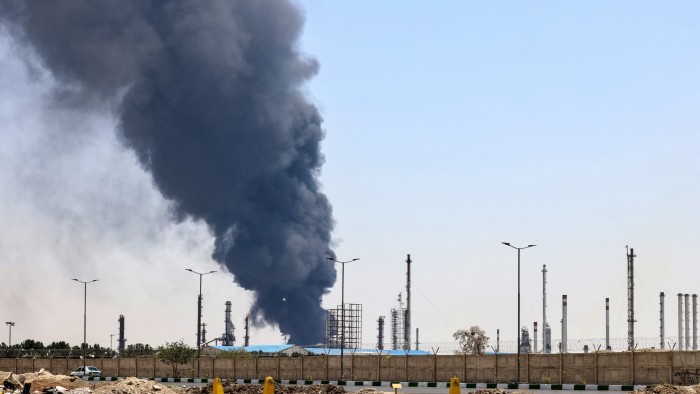Stay informed with free updates
Simply sign up to the Oil myFT Digest — delivered directly to your inbox.
The writer is director of research and co-founder at Energy Aspects
The threat of Israel or the US striking Iran has hung over oil markets for decades. Now that it has happened, however, the market seems unsure in its attempts to price in the implications for energy.
So far there has been minimal supply disruptions and the oil market has only been a little disturbed by the ongoing conflict. Brent crude prices have only risen by about $10 since the conflict started as the Opec 8+ group of key oil producers — Saudi Arabia, Russia, Iraq, UAE, Kuwait, Kazakhstan, Algeria, and Oman — is already unwinding production cuts at an accelerated pace, reducing supply fears in the near-term.
Of course, much will depend on whether the Israel-Iran conflict escalates further as Iran’s Supreme Leader Ayatollah Ali Khamenei and his advisers navigate options that range from bad to worse. But one very plausible and likely outcome is that Iran will hunker down rather than rush to accept a deal on terms dictated by US President Donald Trump.
It may feel it needs to carry out token strikes on US regional assets, but will recognise that directly striking American military bases or trying to disrupt regional energy flows would invite a much stronger US military reaction. So attempts to close the critical Strait of Hormuz waterway between Iran and the Gulf States for oil transport remain a last resort and unlikely.
But short-term disruptions are still a risk and the medium term implications of the Iranian conflict can potentially be more severe, especially if Israel and the US are serious about pushing for regime change. If there is a power struggle, hardline factions or religious extremists could come out on top. There will also be increased potential for unrest among Iranian minority groups, particularly the Kurds and Baloch, as well as Islamic militants.
Over the medium-term, any significant domestic political upheaval is likely to hurt Iranian oil and gas production, particularly in extreme scenarios where the country fragments or descends into a civil war. Previous periods of upheaval in Opec countries such as the 1979 Iran revolution, 1991 Gulf war, the 2002 Venezuela coup and the 2011 Libya civil war, have caused major disruption to oil output, that has taken years or even decades to resolve, often leading to higher oil prices.
While the details of each crisis are different, the general theme is that political instability often threatens output for years, often leading to higher oil prices for varying periods.
The medium-term hit to Iranian production could come at a time when the broad Opec+ group of countries is left with less spare capacity, having accelerated its production increase this summer.
US crude production is also expected to peak around 2027 with price declines this year since the global tariff war broke out expected to lead to a drop in the number of drilling rigs being deployed. This will make it difficult for production to reach the levels previously anticipated. While US operators continue to increase the rate at which they can drill with existing rigs, they also are increasingly facing a degradation in production per lateral foot as the best rock is drilled up. In addition, the rising ratio of gas coming of shale project relative to oil could pose additional challenges to US producers. Indeed, the shale patch is getting increasingly gassy as it matures.
Against this backdrop, oil demand isn’t set to peak any time soon. If anything, Trump’s return to the US presidency on the back of an electoral platform that was unabashedly pro-fossil fuels and inflation worries over the cost of greener energy across OECD countries have slowed the transition to a lower carbon system. In the US, the proposed elimination of clean vehicle tax credits, coupled with the rollback of vehicle emissions standards, will lead to more demand than forecast, even if it remains lower than 2025.
Indeed, we now expect global liquid fuels demand to hold above 100mn barrels a day into the 2040s — a level in line with that expected in 2025 — even if renewables continue to dominate our outlook for electric power growth. After peaking at 111mnb/d in the early 2030s, global liquid energy demand will ease gradually as strong petrochemical demand offsets contractions in most other sectors.
All of this is to say that the oil market may be lulled into a sense of
complacency in the near term amid Iran’s weakened position. But this could very well be the catalyst for higher prices in the coming years as Iranian production declines just as other sources of supply peak.
Richard Bronze co-founder of Energy Aspects, contributed to this piece
